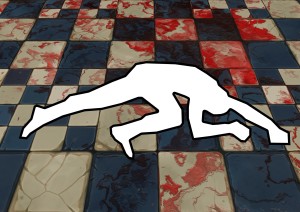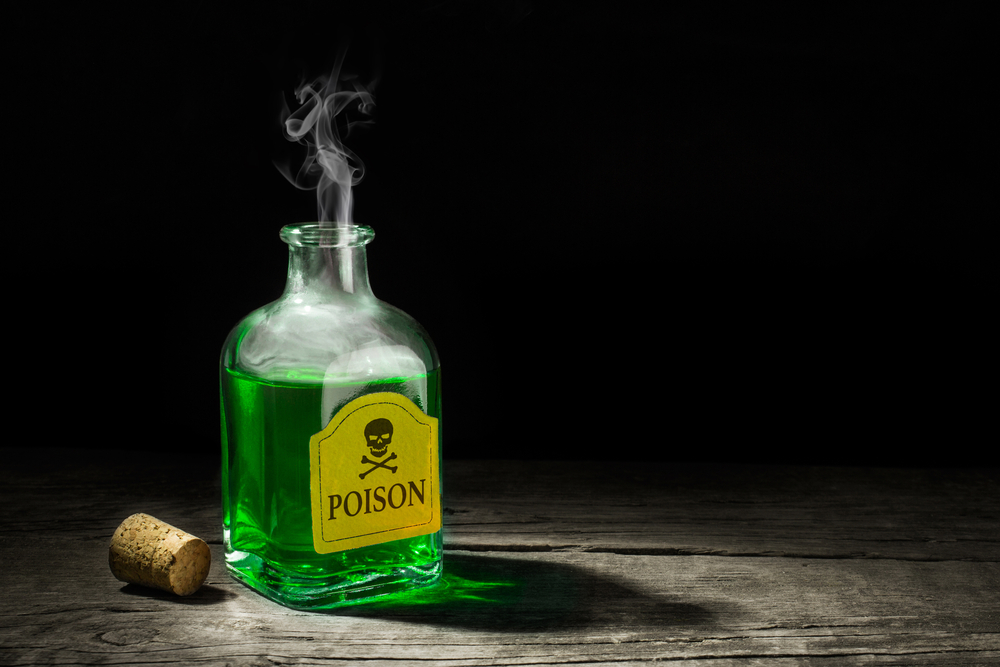
Anatomy of a No-Body Murder Case
This was a prosecutor’s nightmare.
Jessica O’Grady’s made her last cell phone call to her friend Keri Peterson at 11:29 pm on May 10, 2006 in Omaha, Nebraska. The 19-year old was near her boyfriend’s home. At 11:48 pm, she called her boyfriend, and 45 minutes later texted Keri.
No one ever heard from Jessica again.
When Jessica didn’t return home to her roommates and pet cat, her friends consulted with each other and bombarded her cell phones with messages. Jessica never answered. Two days later, Jessica’s aunt checked in with Jessica’s mother, who had no explanation for the girl’s disappearance. Jessica’s uncle called the police. Concern mounted when she failed to show up for work, pick up her paycheck, and didn’t show for a softball game.
In the course of questioning all the people who’d recently been in contact with Jessica, the police paid a visit to the boyfriend. He allowed them to search his bedroom, and when the police flipped his mattress over, they found it drenched with damp blood. There was so much blood the police were certain someone had either died or was in critical medical condition. Luminol showed blood splatters around the room. Further examination showed the boyfriend had tried to cover them up with white paint. DNA testing later proved it was Jessica’s blood in the mattress and splattered around the room. And the boyfriend’s browsing history showed he was studying human arteries the day before Jessica disappeared.
The boyfriend, Chris Edwards, never admitted to doing anything to Jessica. He insisted the blood had a simple explanation: Jessica had her period. You can view a photo of the mattress by clicking here and scrolling down to March 28, 2008.
What do you think? Crime or natural causes?
But where was Jessica? Intensive search efforts failed to recover a body and Edwards remained tight-lipped. Identification of a murder weapon was uncertain.
The prosecutor had a tough decision to make. A no-body murder case is the hardest to prove. And the prosecutor has only one chance. The constitutional double jeopardy clause protects defendants from being tried more than once for the same crime, even if a body is found later. For that reason, many prosecutors prefer to wait for the discovery of a body.
Jessica’s case was once of those rare instances in which a prosecutor went forward with a no-body murder prosecution and secured a conviction. John Ferak’s recent book, Body of Proof, provides excellent background into Jessica’s case if you want to read more. The case became more complicated after the conviction because a detective was convicted of planting evidence in other cases.

Trying No-Body Murder Cases
I still remember learning about no-body murder cases in law school. The hard part is proving someone died without a body. A killing is an element of the crime of murder, and the best way to prove a killing is with a dead body. Without the body, there is always a chance the victim could turn up somewhere, alive.
Blood – lots of it – is the usual cornerstone of proof in a no-body murder case, our professor told us. You can couple that with expert medical testimony on how much blood loss would cause a death.
But how do you prove how much blood is in a mattress? Do you have to bore samples throughout the material to see how deep the material is saturated? In Jessica’s case, the defense tried pouring pig’s blood onto the same type of mattress to test how much blood the original mattress had, but getting the blood to saturate in the same pattern and to the same depth is an inexact science.
According to a new book on prosecuting no body murder cases, most evidence of the death fall into one or more of three categories: (1) forensic evidence, like blood loss, (2) a confession to a friend who snitches, and (3) confession to the police. And if it can pull together enough evidence, the prosecution often succeeds in obtaining a conviction. Prosecutor and author Ted DiBiase maintains a website listing 444 non-body murder trials in the USA as of June, 2015, and 80% of them were successful.

Abraham Lincoln Tried a No-Body Murder Case
Abraham Lincoln was without a doubt the most famous lawyer to have ever tried a no-body murder case. He and two other lawyers represented Archibald and William Taylor. They were charged with murdering another man.
Like Jessica, the victim had disappeared, and despite an intensive search, no body was found. The attorney general interrogated and plied the defendants’ brother for two days, who denied everything. But finally he gave in under pressure and said the defendants had confessed to the murder. He also offered a fourth category of evidence: eye witness testimony. He said he’d seen the defendants with a dead body. The prosecution thought it had an airtight case, even without a body.
But what Lincoln did next not only proved the pitfalls of any no-body murder case, it also showed the danger of an over-enthusiastic police interrogation leading to a false confession. Lincoln found the victim alive. A man named Myers arrived in Springfield, bringing the victim “in full life and proper person.” The victim suffered from amnesia and could not explain why he had left the defendants and disappeared. But dead he was not, and the judge dismissed the case.
Lincoln later published a short story about his no-body murder case, which might have made him the first true crime author in U.S. history. You can read his story here.
If you were sitting on a jury, what kind of evidence would convince you of a murder even if no body had been found?
Literature on point:
Michael Burlingame, Abraham Lincoln: A Life, vol. 1 (Johns Hopkins University Press, 2008)
Tad DiBiase, No-Body Homicide Cases (CRC Press, 2014)
John Ferak, Body of Proof: Tainted Evidence in the Murder of Jessica O’Grady? (Evergreen, CO: Wildblue Press, 2015)
Abraham Lincoln, The Trailor Murder Mystery (public domain)




Grim and understandably complicated. I want to blame Jessica’s boyfriend, but where’s the proof? How wonderful if she showed up like Abe’s missing “dead” person, but it sounds unlikely. Menstrual blood splattered on the walls? Hmmm… But no body. Thanks for showing me how things work in criminal justice where we, hopefully, demand hard facts rather than relying on hunches and intuition.
Court cases are often tough, Elaine, because the evidence isn’t as clear as we’d like it to be. Cases with clear cut evidence get settled out of court or plea-bargained. But in Jessica’s case, it was pretty clear the boyfriend did something because there were no reasonable alternative explanations. I just find it sad that Jessica was never found.
Hello there
First of all I’d like to compliment you on your beautiful layout it’s really stunning
This is a very interesting article especially as I’ve read the book Body of Proof
I didn’t know the information given in this article about Lincoln before
Great interesting and informative post
Keep up the good work
Bjørk
Thanks, Bjørk! I enjoy reading your book reviews too!
Does Occam’s Razor hold up in court?
Interesting question, John. The burden of proof in a criminal case is “beyond a reasonable doubt.” The standard is set so high in order to avoid conviction of innocent people. For that reason, a jury can’t just select the option involving the least amount of assumption; it has to also find that option meets the legal burden of proof. I see Occam’s razor more as a scientific guide in analyzing experimental data.
[…] delicti is what makes it so hard to prove no-body murder cases. In fact, it was this case, the so-called “Perry’s case,” that formed the legal […]